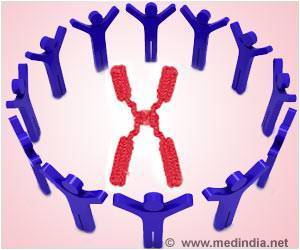After evolving over a period of 3.8 billion years, living organisms have developed countless strategies to monitor their environs.

Nature often serves as a source of inspiration for the development of new technologies. In the field of medical diagnostics, for example, scientists have long taken advantage of the high affinity and specificity of biomolecules such as antibodies and DNA to detect molecular markers in the blood. These molecular markers allow them to monitor health status and to guide treatments for diseases, including HIV, cancer, and diabetes.
Kevin W. Plaxco, a professor of chemistry at UCSB, whose group carried out the research, notes that despite their great attributes, a main limitation of such biosensors is their precision, which is confined to a fixed, well-defined "dynamic range" of target concentrations. Specifically, the useful dynamic range of typical biomolecule binding events spans an 81-fold range of target concentrations
"This fixed dynamic range complicates –– or even precludes –– the use of biosensors in many applications," said Plaxco. "To monitor HIV progression and provide the appropriate medication, for example, physicians need to measure the levels of viruses over five orders of magnitude. Likewise, the two orders-of-magnitude range displayed by most biosensors is too broad to precisely monitor the concentrations of the highly toxic drugs used to treat many cancers. Our goal was, therefore, to create sensors with extended (for applications needing a broad dynamic range) or narrowed (for applications needing high measurement precision) dynamic ranges at will."
The key breakthrough underlying their new approach came from the simple observation of nature. "All living organisms monitor their environments in an optimized way by using sensing molecules that respond to either wide or narrow change in target concentrations," said Alexis Vallée-Bélisle, a postdoctoral fellow and the first author of the study. "Nature does so by combining in a very elegant way multiple receptors, each displaying a different affinity for their common target".
Source-Eurekalert









